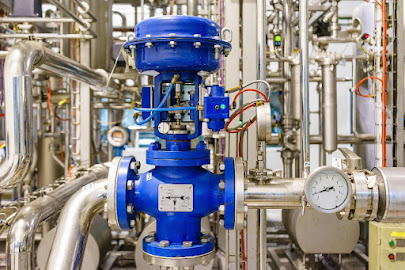Enhancing Fluid Control: The Power of Butterfly Valves, Check Valves, and High-Pressure Ball Valves
Fluid control is the backbone of various industries, from oil and gas to water treatment. Precise and reliable valves play a crucial role in managing fluid flow efficiently and safely. In this article, we delve into the world of Butterfly Valves, Check Valves, and High-Pressure Ball Valves, exploring their unique features and the significance they hold in different applications.
Understanding Butterfly Valves
Butterfly Valves have gained widespread popularity due to their simplicity and cost-effectiveness. These valves are quarter-turn devices that regulate flow by pivoting a disc at the center. When the disc is parallel to the flow direction, the valve is fully open, allowing unrestricted fluid passage. Conversely, rotating the disc to a perpendicular position closes the valve, effectively stopping the flow.
The streamlined design of Butterfly Valves results in lower pressure drops, making them ideal for large-scale applications where energy efficiency is a priority. Additionally, their compact size and lightweight construction simplify installation and maintenance.
The Importance of Check Valves
Check Valves, also known as non-return or one-way valves, play a vital role in preventing backflow of fluids. These valves permit flow in one direction while automatically closing to prevent reverse flow when the pressure changes.
Check Valves come in various designs, such as swing, lift, and ball check valves. Each type serves specific purposes, ensuring efficient fluid control and preventing potential damage to equipment and pipelines.
Exploring High-Pressure Ball Valves
High-Pressure Ball Valves are robust and versatile components designed to withstand extreme operating conditions. They offer precise flow control and are commonly used in applications where high-pressure and high-temperature fluids are involved.
The ball within the valve allows for quick and reliable shut-off when needed, ensuring safety and reducing the risk of leaks in demanding environments. High-Pressure Ball Valves are extensively used in industries like oil and gas, chemical processing, and power generation.
Advantages of Butterfly Valves
Cost-Effectiveness: Butterfly Valves are economically advantageous due to their simple construction and ease of maintenance, making them a popular choice in various industries.
Energy Efficiency: The low-pressure drop across Butterfly Valves helps in conserving energy, making them an environmentally friendly option.
Fast Operation: Quarter-turn operation allows for quick and precise flow control, making them ideal for applications requiring swift responses.
Benefits of Check Valves
Preventing Backflow: Check Valves are essential in preventing reverse flow, ensuring fluid only moves in the intended direction.
Maintenance-Free: Many Check Valves are self-actuating, requiring no external power source or manual intervention for their operation.
Versatility: Check Valves come in various designs and sizes, suitable for a wide range of applications across different industries.
Advantages of High-Pressure Ball Valves
Durability: High-Pressure Ball Valves are built to withstand extreme conditions, ensuring a long lifespan even in harsh environments.
Reliable Shut-Off: The ball design provides a tight seal, preventing leakage and guaranteeing a secure shut-off when required.
Precise Control: High-Pressure Ball Valves offer accurate flow control, making them suitable for critical processes that demand precision.
Conclusion
The world of fluid control relies heavily on the efficiency and reliability of Butterfly Valves, Check Valves, and High-Pressure Ball Valves. Each of these valves serves a unique purpose, catering to diverse industrial applications. From energy-efficient and cost-effective Butterfly Valves to the backflow prevention capabilities of Check Valves and the robustness of High-Pressure Ball Valves, each component plays a vital role in enhancing safety and efficiency in fluid handling processes.
When selecting valves for specific applications, understanding the unique features and advantages of each type is crucial. Whether it's ensuring uninterrupted fluid flow, preventing reverse flow, or handling high-pressure systems, choosing the right valve can significantly impact the overall performance and productivity of industrial processes.
.jpg)



Comments
Post a Comment